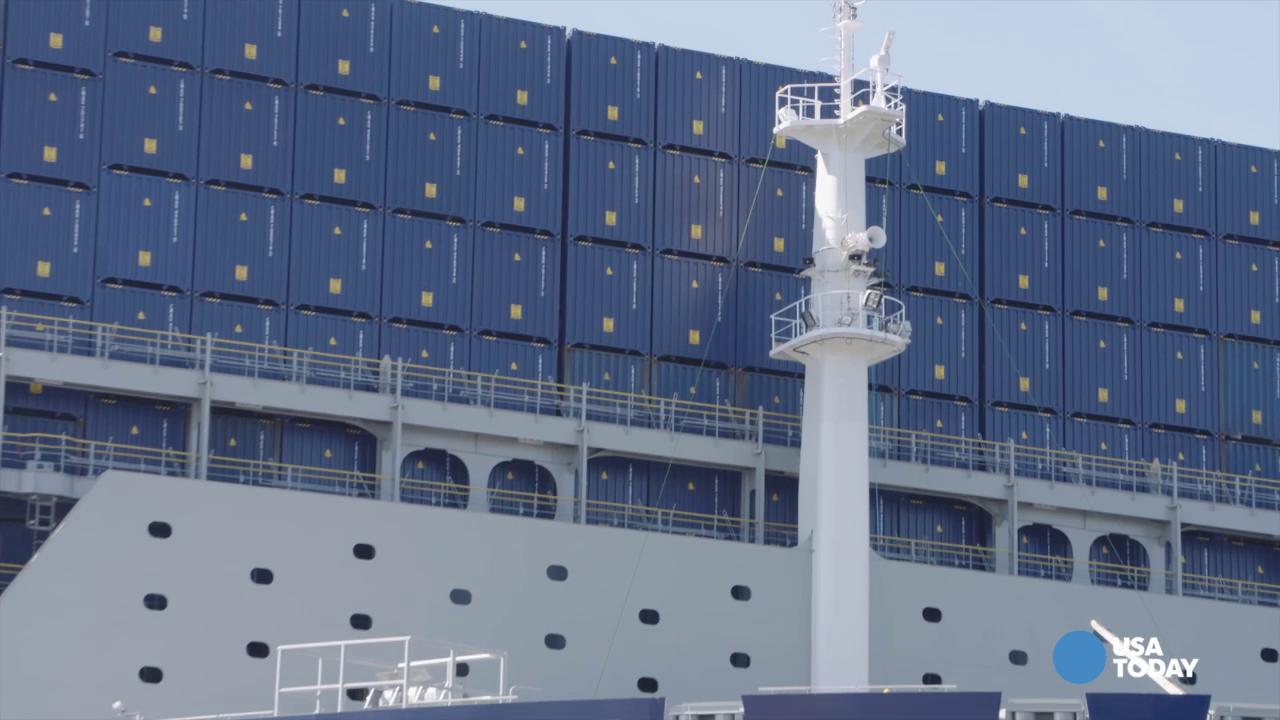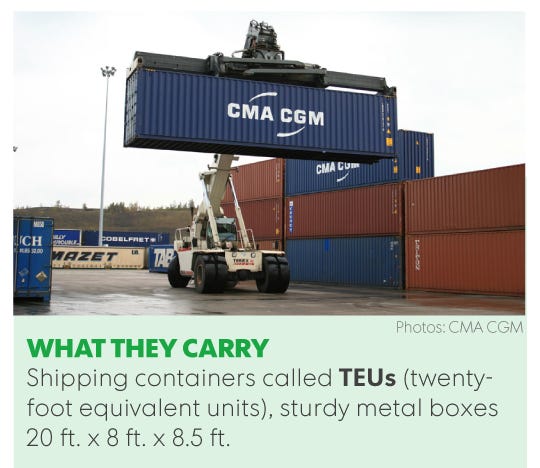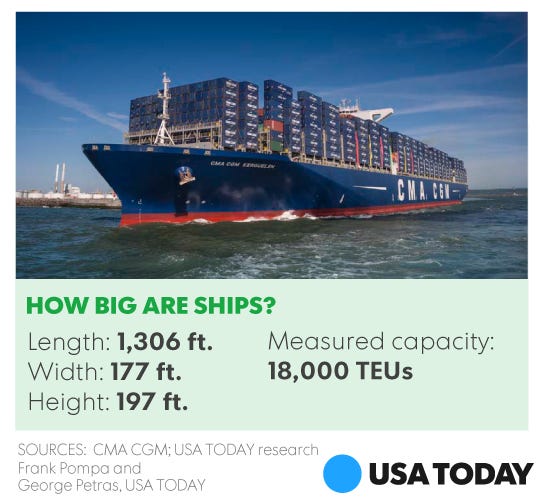
Amber Corbett didn't have the happiest childhood, but now that she has grown up, she has chosen to live a life full of happiness and joy... Something she found through her job being a silly balloon sculptor.VPC
The CMA CGM Benjamin Franklin — yes, the name seems as long as the ship — is one of a new breed. Container ships are growing ever larger, testing not only the limits of naval architecture but the infrastructure of the ports at which they would call.
American ports are scrambling to dredge channels and raise container cranes as they vie to handle these new ships. Shipping line CMA CGM has been sending the Franklin, the pride of its fleet, to various West Coast ports to send the message that the largest of container ships are on the way and that now is the time to invest whatever it takes to accommodate them.
(
In Long Beach, officials say they will have three berths in coming months that will be able to handle container superships. But it's still a struggle. The Franklin was stacked eight containers high, two layers short of capacity, because the terminal's cranes haven't yet been raised.
This port has already scraped channels deeper and is raising a key bridge by 45 feet — at a cost of $1 billion.
"If there was any doubt we are big-ship ready, that ship puts that debate to rest," said Lori Ann Guzman, president of the Long Beach Board of Harbor Commissioners, with the Franklin looming over her shoulder.
Other ports are making the same claim. The port of Miami, under the banner "big ships welcome," said last year that it is spending more than $1 billion raising cranes and dredging.
Port officials see it as a matter of necessity since nowadays, larger container ships rule the waves. The Franklin, as wide as a 12-lane highway, totes the equivalent of 18,000 20-foot containers. Those boxes haul everything from toys and tires from China to electronics and wine from Europe. At a port, they are transferred to train cars or the backs of trucks, headed from both American coasts into the heartland to restock mass-market stores like
The move to larger ships is a matter of efficiency. The Franklin's diesels produce thrust equal to that from 11
"We see these types of vessels as the future of shipping," says Marc Bourdon, president of CMA CGM America. "The whole purpose around these larger vessels is economies of scale."
Shipping lines scour the world in their quest for hyper-efficiency and the best price. Though named for an American founding father, the Franklin is owned by a French shipping company, was built in China, cruises under a British flag and is crewed mostly by Filipinos working under a Croatian captain.
They have no choice. The world's container fleet is expected to grow another 4.6% this year and by about the same amount in 2017, says a new report from
Ships the size of the Franklin, the largest in the industry, represent the fastest-growing segment of the global container fleet, AlixPartners says.
"The arrival of such vessels exacerbates supply-and-demand imbalances on major trade routes," the report says. "Only the largest and most sophisticated ports, located mainly in Asia and Europe, can serve these mammoth vessels with any frequency."
Long Beach hopes to be among them. But officials know they can't be complacent. The Franklin had already called at its adjacent rival, the
"We are ready," proclaimed Long Beach Mayor Robert Garcia.

The brand new CMA CGM Benjamin Franklin is one of the largest cargo ships in the world. If all of its containers were filled, it could carry 90 million pairs of shoes. USA TODAY




No comments:
Post a Comment